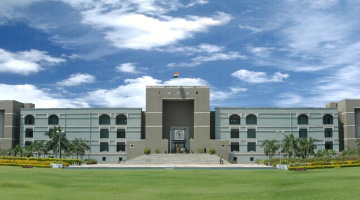I-T - When assessee newspaper fails to maintain separate books for two units, one being eligible for Sec 80-I benefits, it would be fair to divide income between them in proportion to circulations: HC
By TIOL News Service
AHMEDABAD, MAY 07, 2018: THE ISSUE BEFORE THE BENCH IS - Whether when the assessee newspaper fails to maintain separate books for its two units, one of them being eligible for Sec 80-I benefits, it would be fair to divide the income between the two units in proportion of their circulations.YES IS THE ANSWER.
Facts of the case
The Assessee-company, a publishing house, set up two printing units, one at Khanpur and another at Nilgiri. The Nilgiri unit was eligible for deduction u/s 80-I but the Khanpur unit did not enjoy such benefits. For the relevant AY, the assessee filed the return of income which came-up for scrutiny assessment u/s 143(3) r/w/s 147. During such scrutiny assessment, the AO noticed that the assessee had claimed deduction u/s 80-I for the Nilgiri Unit by claiming equal revenue allocation though the proportion of copies of news papers printed at both places was unequal. However, the AO was not convinced about such allocation and therefore, called upon the assessee to clarify in that regard. The assessee contended that Ahmedabad edition of the news papers represented 66.9% of the total number of copies of the news papers sold. It also represented 67.8% of the total sale amount generated through such sale. It further pointed out that the Ahmedabad edition received 89.97% of the advertisement income. The assessee also pointed out that between Ahemdabad edition, proportion of Khanpur Unit and Nilgiri Unit was 60.35% and 39.65% respectively.
However, the AO did not approve the higher allocation of advertisement income in the hands of the eligible unit. He was also not convinced about the Ahmedabad edition receiving 89.97% of the advertisement revenue. He was of the opinion that such figure included advertisement income of other editions also. He noted that in the assessment year 1994-95, he had made adjustment in that head and computed the advertisement income of Ahmedabad edition at 71%. However, in such year, since the circulation of Ahmedabad edition was 45% of the total circulation of the news paper, he decided to allocate advertisement income to Ahmedabad unit at 80% considering that in current year, Ahmedabad edition circulation was 67.% of the total circulation
The AO therefore, attributed 80% of total advertisement income to Ahmedabad unit. Having done that he discarded the assessee’s contention that such advertisement income was largely generated only out of city sale of news papers and therefore, the profit margins in case of Khanpur and Nilgiri units should be equally devised since majority of such copies sold in the city were printed at Nilgiri unit. He instead, applied the ratio of the total number of copies printed and sold by these two units inter se.
On assessee's appeal, the CIT(A) substantially accepted the assessee’s contention but not the formula as such. He was of the opinion that a fair formula should be worked out which would give higher profitability to the city edition at the same time, not adopting a simple formula of the allocation of advertisement revenue purely on the basis of proportion of the number of copies printed and sold by the two units. Therefore, he devised the formula, which was bases on weighted revenue allocation. On further appeal by the Revenue, the Tribunal approved the CIT(A)'s weighted revenue allocation formula and rejected the appeal filed by the Revenue.
On hearing the matter, the High Court held that,
++ in the order of assessment, the Assessing Officer merely referred to advertisement income of some other editions being merged with these figures provided by the assessee without any further elaboration. Without establishing that such merging was at large scale, he relied on the exercise undertaken by him for earlier year and purportedly projected the figures for the present year. Firstly, we do not approve of this tinkering by the Assessing Officer on a passing observation of the advertisement income including income from certain other editions without citing instances and without even attempt to estimate the level of such intermixing. Equally importantly his projection of the previous years' figures was also erroneous. He noted that in the previous year, the assessee had shown the proportion of Ahmedabad edition at 45% of the total publication by the news paper as compared to 67% of the current year. Since in the previous year he had worked out the advertisement revenue generation for Ahmedabad edition at 71%, he adopted a figure of 80% for the current year. Going simply by proportion of 45:71, the 67% publication of Ahmedabad edition would justify advertisement income allocation of over 100%. Under the circumstances, we would not permit the Assessing Officer to tamper with the assessee's projection of advertisement revenue of Ahmedabad edition at 89.87% of the total advertisement revenue. With varying figures, same scenario would prevail in all assessment years;
++ the Revenue has raised strong objection to the very foundation adopted by the CIT(A) viz. to hold that 81% of the publication in the city of Ahmedabad was printed in Niligir unit. The Revenue contends that, no evidence was led to establish this fact. We find considerable force in this contention. The assessee's representation before the CIT(A) was that for its business considerations out of the total number of copies of the news papers sold in the city, 81 came from the printing house at Nilgiri. In other words, the assessee contended that the Nilgiri unit provided 81% of the news papers sold in Ahmedabad. The rest were supplied by Khanpur unit. This factual assertion of the assessee was not examined by the CIT(A) before acceptance. We do not find sufficient material produced by the assessee to establish this basic fact. CIT(A) therefore, proceeded on unverified facts;
++ CIT(A) seems to have given considerable importance to the assessee's assertion that bulk of the Ahmedabad circulation came from Nilgiri unit whereas the bulk of the news paper printed at Khanpur were circulated outside Ahmedabad. Quite apart from such data not being established on record we wonder whether this could be the rational basis for making disproportionate income allocation between the two units. A noted earlier, the formula devised by the CIT (A) does not even properly project this primary element. Even otherwise, we do not find that this is the rational basis for disproportionate allocation of income between the two units. The news papers remained the same. The news, the articles, the advertisements, the quality of paper and the printing quality were the same. The cost of the news paper also remained the same. Merely because greater number of news papers printed at Nilgiri unit were diverted for circulation in Ahmedabad would not make any material difference insofar as income allocation is concerned;
++ the assessee had not maintained separate accounts for its two units of Ahmedabad one being eligible for deduction under section 80-I, the other not so eligible. Both printing units printed and published news papers which were marked as Ahmedabad edition. Such news papers were circulated in and around the city of Ahmedabad including North Gujarat. The news papers, in all respects, were identical. The quality of paper used, the printing material and the cost of each such news paper sold in Ahmedabad as well as outside Ahmedabad were the same. Under the circumstances, the most fair and equitable means of dividing the income between the two units would be in the proportion of their internal publication and circulation of Ahmedabad edition. That is what the Assessing Officer has done.
(See 2018-TIOL-842-HC-AHM-IT)














